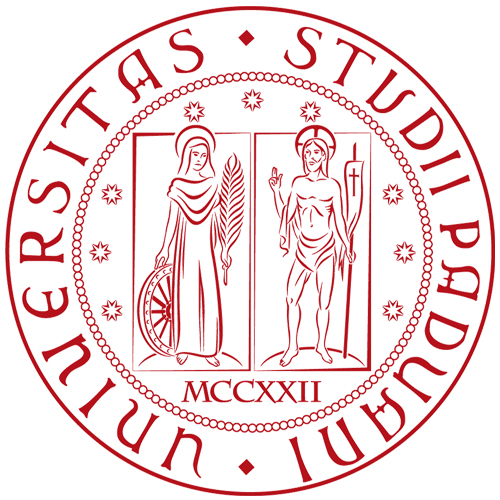Featured
INTER-CULT
PadovaCultic honours and divinisation in the Hellenistic Eastern Mediterranean
New voices for interdisciplinary collaboration
Introducing Inter-Cult
Inter-Cult is a research project born from the joint effort between the Universities of Lausanne and Padova to boost international and interdisciplinary collaboration between their researchers and research networks.
Within this stimulating framework, S. Caneva and G. Lenzo have conceived a 1-year programme to promote interdisciplinary and inter-generational exchanges between scholars specialising in the cultural – political and religious – history of the Hellenistic period.
The focus of Inter-Cult is on two crucial aspects leading to the encounter and cross-fertilisation of traditions in the ancient Mediterranean world: cultural...
PHRC065 : Dedication to King Seleukos I, Thyateira - Lydia (c. 281/0 BC) Dedication
38.920079,27.836202This inscription, now lost, has preserved the rare case of a dedication to a Seleucid king made by agents other than civic institutions. The authors were a group of Macedonian soldiers from the settlement of Thyateira (NW Lydia) honouring the founder of the colony, King Seleukos I. The foundation of the settlement and the dedication plausibly date soon after Seleukos’ victorious campaign against Lysimachos. The text was written on a small altar or on a stone plaque attached to it.
Permanent ID: http://s.phrc.it/phrc065...
PHRC collaborators
PadovaDo you want to collaborate with us? Coding, commenting, translating: there is plenty of work to do!
Please write to stefano.caneva@unipd.it
A fragmentary marble plaque discovered in 1969 in the sanctuary of Eshmun at Bostan esh-Sheikh near Sidon contains a dedication, probably by local priests, to King Antiochos III, Queen Laodike, and their son and co-regent Antiochos. The royal recipients of the dedication are unexpectedly referred to as Theoi Soteres and Theoi Euergetai, two epicleses unprecedented in the Seleucid tradition but well rooted in Ptolemaic practice. Thus, the dedication sheds light on a transfer of epithets from the old to the new masters of Phoenicia, recently annexed to the Seleucid kingdom by Antiochos III during the 4th Syrian war. The organization of the dedication is reminiscent of the classic configuration of Phoenician civic triads composed of a divine couple and their child. This decree was passed by the Attic deme of Rhamnous to honour King Antigonos II, probably after his decision to withdraw the Macedonian garrison from the city and to return Attic fortresses to Athenian control in 256/5 BC. Being the seat of a strategic defense hub in northern Attica, Rhamnous was directly affected by this decision and issued an honorific decree which built upon and complemented the isotheoi timai (godlike honours) granted to Antigonos in Athens. The text is one of the very few documents using this formula to describe cultic honours for political leaders in the 3rd cent. The king was granted the epithet of “Saviour of the Demos” and his altar became the centre of a yearly sacrifice addressed to him on the occasion of his birthday. The event was associated with the... This fragmentary decree was issued by the city of Mylasa, probably soon after 240 BC, to honour Seleukos II’s strategos Olympichos for liberating the city. Although the order to give the city freedom and democracy had stemmed from the king, Olympichos and the Mylanians represented the events by stressing their own roles and placing the focus on Olympichos’ benevolence and on the city’s gratitude. For this reason, Olympichos receives a full-scale series of cultic honours by means of which his status closely resembles that of contemporary kings. A sculptural group representing the Demos in the act of crowning Olympichos was flanked by an altar where an annual procession and sacrifice took place, having Olympichos as their cult recipient. The decree prescribes a series of activities... Dear PHRC users,
The last year has been difficult for all, including the PHRC team... but we are back! This marble stele contains a decree of two villages in the Lykos valley honouring Achaios the Elder and two of his collaborators for protecting the local population and ransoming prisoners during a conflict with Galatian tribes. While not a secessionist, Achaios received honours positioning him very close to the prestige of kings: he was called Soter, just as Antiochos I, and received a yearly sacrifice of an ox in a sanctuary of Zeus, whereas his collaborators were referred to as Euergetai and honoured with the yearly sacrifice of one ram each in a sanctuary of Apollo. The use of different types of sacrificial animals to express a hierarchical relationship between the recipients of cult is unique in the documentation concerning ritual honours for political leaders. Another interesting... This dedication from Kanopos (ca 270-240 BC) was probably part of an altar of an another cult structure. Its text is particular in at least two respects. Firstly, it provides a rare case where an individual agent accomplished a dedication to a Ptolemaic ruler (in the dative) for (hyper) himself and his family. Secondly, the most convincing integration of the lacuna at the beginning of the text delivers the compound denomination Isis Arsinoe Philadelphos. While the link between Isis and Arsinoe is a well-known aspect of the cult for this queen, in Greek compound denominations Arsinoe’s name usually precedes that of the goddess. This detail may point to an Egyptian cultic context and the sanctuary of Isis and Anubis in Kanopos is a plausible candidate for the original place of the... Uncovering the ritual and social aspects of cultic honours for human beings
Until now, the study of cultic honours for Hellenistic political leaders and benefactors has mainly focused on the ideological and diplomatic features of the phenomenon. The project "Practicalities of Hellenistic Ruler Cults" (PHRC) shifts the focus on its practical aspects: the materiality of media, ritual action and space, actors, administration, and the funding of cults. In doing so, PHRC aims to set the debate on ritual honours for human beings in the broader context of Greek religious and social history in the post-classical period.
The PHRC digital library
The sources of PHRC comprise Greek epigraphic texts from the Eastern Mediterranean, between the ages of Alexander and Augustus. At this first stage of... This limestone plaque bears an elegantly written dedication by a private donor to the divine triad Sarapis, Isis, and Neilos together with the royal couple Ptolemy III and Berenike II, the Theoi Euergetai. The content of the dedication and the actual place where it was accomplished are unknown. Kanopos has delivered various inscriptions testifying to the interaction between Isiac deities and the royal house. As for PHRC 055, the addition of the river god Nile to the list of recipients suggests a possible link with the content of the Kanopos decree (238 BC), where the ruling couple is celebrated for having protected the population in a period of food shortage caused by an insufficient Nile flood, and for a calendar reform meant to reinstate the natural order of seasons. The presence of... This dedication to Arsinoe Thea Philadelphos is written on an incense burner carved in the form of a miniature horned altar. A similar object was found in Alexandria (PHRC 051), but another provenance from the Delta or Fayum is also possible for this specimen. The addition of the term Thea to the common denomination Arsinoe Philadelphos is a rare feature only attested by a few dedications in Egypt. The small size may point to a context of househols religion, but we cannot exclude that the altar was used during a journey or was dedicated in a sanctuary. The unknown author of this dedication consecrated two precincts with altars to a set of deities and deceased Ptolemies, on behalf of the living rulers Ptolemy IV and Arsinoe III. A first cult place was dedicated to a deity (probably Zeus) bearing the epithet Pantheos, together with Ptolemy III and Berenike II, who exceptionally hold two epicleses: the traditional Theoi Euergetai and the unique Theoi Eusebeis. The second precinct is dedicated to Hestia Pantheos. Various phonetic and linguistic details point to a donor with an Egyptian background. The fact that a unique Egyptian term translated both Greek expressions Euergetai (the Beneficent ones) and Eusebeis (the Pious ones) is used to highlight the topic of royal piety and euergetism towards temples and gods. The choice of Hestia (and... This plaque was originally part of an altar or of another cult structure dedicated to Aphrodite Akraia Arsinoe in the surroundings of Alexandria. The dedicatory formula does not allow to conclude whether the compound denomination points to one or two recipients; in the latter case, we should assume that the two denominations are connected without a conjunction. A common epithet of Aphrodite, Akraia evokes a cult place situated on a high location, probably to be identified with the promontory (‘akra’) of Cape Zephyrion, where Arsinoe received a shrine associating her with Aphrodite. Moreover, in the Macedonian dialect, this adjective was used of young girls having reached their wedding age. All these aspects fit the cult prerogatives of Arsinoe, who was worshipped as a patroness of... This limestone plaque bears an elegantly written dedication by a citizen of Bargylia to the divine triad Sarapis, Isis, and Neilos together with the royal couple Ptolemy III and Berenike II, the Theoi Euergetai. The content of the dedication and the actual place where it was accomplished are unknown. Kanopos has delivered various inscriptions testifying to the interaction between Isiac deities and the royal house. As for PHRC 061, the addition of the river god Nile to the list of recipients suggests a possible link with the content of the Kanopos decree (238 BC), where the ruling couple is celebrated for having protected the population in a period of food shortage caused by an insufficient Nile flood, and for a calendar reform meant to reinstate the natural order of seasons. The presence... This gold plaque inscribed with a bilingual dedication belongs to the foundation deposit of a sanctuary of the divine couple Sarapis and Isis and of the royal pair Ptolemy IV and Arsinoe III, in Alexandria. The temple was erected in a central location, along the major Canopic street, west of the city's agora, probably in the period between 216/5 (when the denomination Theoi Philopatores appear in the Greek documents) and 210/9, when dedications concerning the royal family start mentioning the prince Ptolemy (V). The anomalous dedicatory formula, which only mentions the recipients of cult without the name of the donor, has raised the question of whether the king or another agent was responsible for this initiative. A few phonetic details in the Greek text reveal the influence of the... This joint dedication to the Theoi Adelphoi, Zeus Olympios and Zeus Synomosios was made by two Alexandrian priests of Zeus in favour of the living royal couple, Ptolemy III and Berenike II (post quem 243/2 BC, suggested by the presence of the epiclesis Theoi Euergetai). The donors dedicated a plot of land and probably divided it into two sacred precincts hosting altars. Perhaps the Theoi Adelphoi shared each precinct with a different configuration of Zeus, or a temenos of the royal ancestors was established next to one of Zeus. The joint dedication and the spatial proximity it establishes between divine and human power were an effective solution to advertise the donors’ loyalty to the dynasty. The two epicleses of Zeus depict him as the king of gods and as the patron of oaths; since... This altar of King Ptolemy II and Arsinoe Philadelphos, discovered on the hill of Rhakotis in Alexandria, is the biggest preserved altar of ruler cults from throughout the Ptolemaic empire. The dedicatory formula points to a date 270-246, while the reference to the dynastic predecessors as the Theoi Soteres (rather than simply Soteres) may further narrow the chronological limits down to the last years of Ptolemy II’s reign (c. 260-246). The altar was part of a small temple, which was later destroyed to leave space to Ptolemy III’s Serapeum. It is plausible that the Rhakotis hill already hosted a cult of Sarapis under Ptolemy II and that the ruling couple was honoured in a section of this shrine, which later underwent a major process of monumentalization on the initative of... A dedication to King Ptolemy II and Arsinoe Philadelphos is written on both sides of an incense burner carved in the form of a miniature horned altar. The dedicatory formula provides a date between 270 and 246, when Ptolemy II ruled alone after Arsinoe II’s death and deification. The dedication made by a group of priests, without further indication of the deities they serverd, can be interpreted in two ways: either they dedicated the object in the santuary where they usually worked, or they did so during a visit. The style of writing and the presence of writing guidelines may suggest that these priests were Egyptians. It is tempting to assume that they dedicated the incense burner to the ruling couple when visiting the sanctuary of Arsinoe in Alexandria.
Principal Investorator
Stefano G. Caneva - Università di Padova
After a MA in Classics and a PhD in Ancient History, Stefano Caneva worked at the universities of Leuven (2010-2011), Liège (2011-2014, 2017-2019), Padova (Marie Curie Piscopia fellowship, 2015-2017), Toulouse (invited professor 2017), and at the Université Libre de Bruxelles (2018-2019). He is currently Assistant Professor of Greek History at the Università di Padova. His current research project, which explores the interconnections between Greek cults for gods and humans in the Hellenistic period, has been developped between Padova and Liège.
PHRC064 : Dedication to King Antiochos III, Queen Laodike and their son Antiochos, Bostan esh-Sheikh (Sidon) - Phoenicia (198-193 BC) Dedication
33.585606,35.398087
Permanent ID:...
PHRC063 : Decree of the deme of Rhamnous honouring Antigonos II Gonatas - Attica (c. 255 BC) Decree
38.223072,24.027553
PHRC062 : Decree of Mylasa honouring the dynast Olympichos (Labraunda, Sanctuary of Zeus) - Karia (240-200 BC) Decree
37.418814,27.820601
New PHRC updates - October 2021 (en)
Padova
We are happy to announce that two new texts have been just uploaded on our website.
They are two important honorific decrees issued by the city of Mylasa (PHRC 062) and by the deme of Rhamnous (PHRC 063), respectively to honour the regional dynast Olympichos and King Antigonos II Gonatas.
PHRC 062 has been co-edited by Lorenzo Paoletti (see PHRC 060).
In addition to providing the first PHRC text from Attica, PHRC 063 is particularly welcome as it has been co-edited by a new collaborator: Serena Peruch, who is currently carrying out her PhD at the Universities of Padova and Venezia.
Stay tuned for more updates during fall 2021!
Go and meet the other collaborators of PHRC...
New PHRC updates (en)
Padova
We are happy to launch a new update of the website, with the following novelties
- we have fixed some technical problems
- added unique and permanent IDs for each entry (now you can link your own projects to PHRC items)
- released 11 new texts: 1 from Asia Minor (decree for Achaios the Elder, PHRC 060), and 10 from Alexandria and Kanopos (PHRC 051-059 and 061)
- enlarged the PHRC team: to date, this is our grop, but we hope to enlarge it even more in the upcoming months!
http://s.phrc.it/phrc-collaborators
Coding, translating, commenting: there is plenty of work to do, come on board!
...
PHRC060 : Decree of the villages of Neon Teichos and Kiddiou Kome for Achaios and his collaborators (Lykos Valley) - Phrygia (267 BC) Decree
37.835939,29.107388
PHRC057 : Dedication to Isis Arsinoe Philadelphos (Kanopos) - Egypt (270-240 BC) Small block
31.313404,30.058059
The PHRC digital library
Université de Liège
PHRC061 : Dedication to Sarapis, Isis, Neilos, Ptolemy III and Berenike II (Kanopos) - Egypt (243-221 BC) Plaque
31.313404,30.058059
PHRC059 : Dedication to Arsinoe Thea Philadelphos, Lower Egypt (Alexandria ?) - Egypt (270-240 BC) Miniature altar
31.198245,29.907914
Permanent ID http://s.phrc.it/phrc059
Images
Photos 1-2: Photos of the stone, from Schreiber 2011, Tf. 53, Figg. 2-3...
PHRC058 : Dedication to Hestia Pantheos, Ptolemy III and Berenike II, Alexandria - Egypt (216/5-210/9 BC) Plaque
31.198245,29.907914
PHRC056 : Dedication to Aphrodite Akraia Arsinoe, Alexandria (Cape Zephyrion?) - Egypt (125-75 BC) Rectangular plaque
31.268941,29.987265
PHRC055 : Dedication to Sarapis, Isis, the Nile, Ptolemy III and Berenike II (Kanopos) - Egypt (243-221 BC) Rectangular plaque
31.313404,30.058059
PHRC054 : Foundation plaque of a shrine of Sarapis, Isis, Ptolemy IV and Arsinoe III (Alexandria) - Egypt (216/5-210/9 BC) Bilingual foundation plaque
31.198245,29.907914
PHRC053 : Dedication to the Theoi Adelphoi, Zeus Olympios and Zeus Synomosios, Alexandria - Egypt (243-211 BC) Dedication
31.198245,29.907914
PHRC052 : Dedication to King Ptolemy II and Arsinoe Philadelphos, Rhakotis, Alexandria - Egypt (270-246 BC) Dedication
31.182587,29.896938
PHRC051 : Dedication to King Ptolemy II and Arsinoe Philadelphos, Alexandria - Egypt (270-246 BC) Dedication
31.198245,29.907914
Permanent ID...




